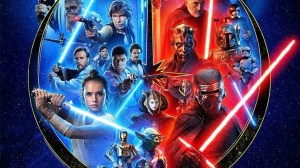So far, 2023 has been something of an indictment of the recent trend of “event”-ifying superhero movies and TV shows. While event comics have long been a staple of the superhero genre, their success does not seem to be translating to film the same way — and there’s probably a good reason why. Since Crisis on Infinite Earths in the mid-80s, hardly a year has passed when both Marvel and DC didn’t have at least one big crossover event, pulling together characters from all corners of their shared universes to face a threat bigger than any solo comic can contain.
Videos by ComicBook.com
Event comics are a huge part of the economy of “Big Two” comics — but something that Disney and Warner Bros. are learning this year is that the comics market is very different from the live-action megabudget adaptation market in some key ways. You probably could have seen it coming with Justice League, if not for the fact that right afterwards there was Avengers: Infinity War and Avengers: Endgame to prop up the crossover event model.
But fast-forward to 2023: both The Flash (an adaptation of the 2011 event Flashpoint), and Secret Invasion (which adapted the 2008 story of the same name) have failed to connect with audiences and, in both cases, they have done at least speculative damage to the universes they are a part of. Spider-Man: Beyond the Spider-Verse is something of an anomaly that we’ll get into in a minute, but it’s worth noting that the big live-action success this year in the comics space has been Guardians of the Galaxy vol. 3, a movie that almost aggressively avoided ties to the Marvel’s shared universe or the various multiversal shenanigans currently going on.
What did Guardians of the Galaxy have that The Flash did not? Well, characters. The world and characters of James Gunn’s Guardians of the Galaxy movies are really well-defined. Fans already loved them going in, and the movie itself did not disappoint, and did not allow itself to be hijacked by digressions into the MCU multiverse. And it delivered on what it promised going in.
These are, to be blunt, things that event comics struggle with even at their best.
For those who aren’t big comic book readers, “event comics” aren’t just comics that tell a big story with big stakes. That can happen within the pages of any given superhero, and often does — especially if the hero in question is sufficiently powerful that world- or universe-ending villains are de rigeur. Instead, event comics are crossover stories, usually structured in such a way that the main story of the crossover takes place in a self-titled miniseries (House of M, Invasion!, Secret Invasion, Infinite Crisis), while the events of the crossover bleed out into the main universe, often with individual comics making tie-in issues. While The Reign of the Supermen! did not have its own miniseries — it took place over the course of several months within the pages of the four monthly Superman comics — it did score a few tie-in issues, most notably Green Lantern #46, in which Hal Jordan returns to Earth to find Coast City destroyed.
The great thing about event comics is that they’re big stories, often being told by the biggest names in comics, featuring the most popular characters. They’re huge spectacles. The not-so-great thing about event comics is that they have a tendency to suck up all the oxygen in the room, hijacking the stories of individual comics and sometimes having really undesirable knock-on effects for characters who were barely considered in the original crossover.
They also take the characters away from their own supporting casts, putting them in rooms or on battlefields populated almost exclusively by other super-characters. That can ultimately have a dulling effect on all the heroes involved, making them feel less remarkable and giving them fewer really interesting ways to interact with others in the books.
Event comics go through cycles. In the ’80s and ’90s, they were huge. In the early 2000s, there had been some diminishing returns, and event comics started to feel less like a thrill, and more like a chore. In 2005 or so, things exploded again. Identity Crisis, Infinite Crisis, Civil War, and House of M showed the world that the ’90s were back, and things have kept up that way since.
It’s interesting to see how Hollywood adapts big event comics, especially since the comics themselves are structured so much differently from feature films. Comics are a monthly, serialized medium with a functionally unlimited “special effects budget,” whereas movies are…none of those things. Marvel has made their universe into something resembling serialized stories, but if you’re spending $200 million on something, it really does have to stand on its own.
One would think that the big, bombastic stories of event comics would lend themselves well to blockbuster movies. Somehow, though, it doesn’t seem to work that way. The lack of any tether to a relatable world, and the way civilian characters are sidelined, ignored, or forced to “suit up” as superheroes makes everything feel kind of…same-y. When the characters’ only job is to fight a big, nebulous threat, it’s easy for them to start feeling like interchangeable cogs in a machine.
(We’ll see whether The Marvels, which seems to have avoided this phenomenon, does better at the box office.)
These events worked well in the Arrowverse, where the need to have an episode for each character or group of characters allowed plenty of breathing room, giving moments for characterization and stakes to be more clearly laid out. The need to get people in and out in two hours makes it a lot harder in the movies.








